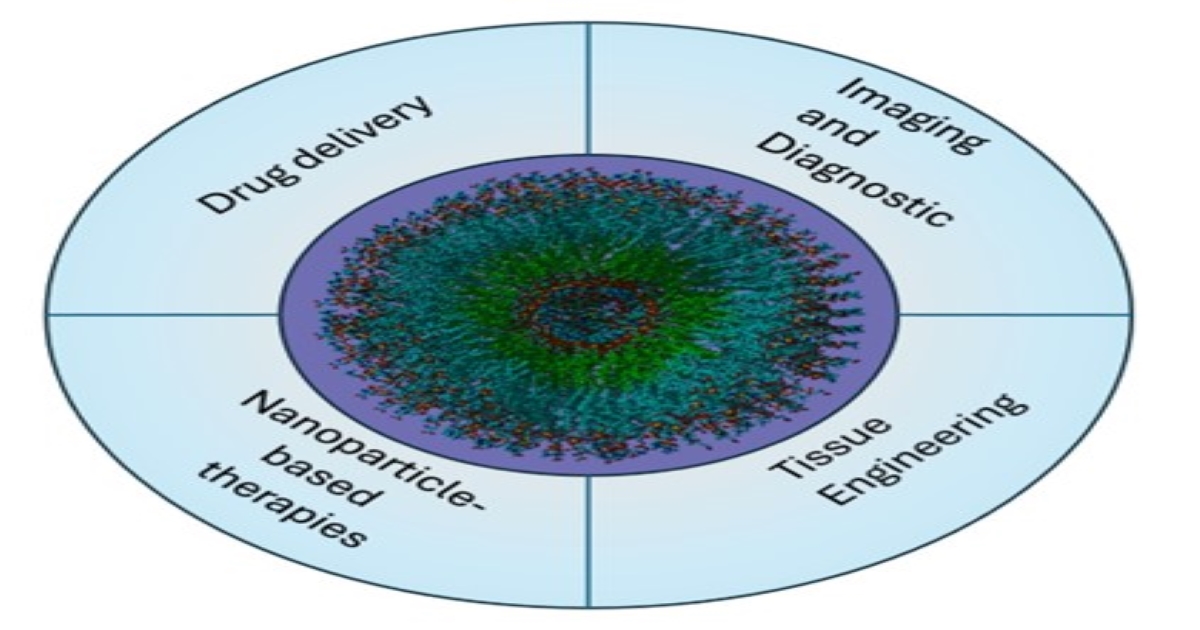Recent Advances in Nanomaterials for Biomedical Applications
A special issue of Materials (ISSN 1996-1944). This special issue belongs to the section "Biomaterials".
Deadline for manuscript submissions: 20 July 2025 | Viewed by 896

Special Issue Editor
Interests: nanotechnology; self-assembly; DNA; AFM; drug delivery; biosensors; molecular electronics; batteries
Special Issues, Collections and Topics in MDPI journals
Special Issue Information
Dear Colleagues,
Biomedical applications of nanomaterials are extremely versatile. New ideas, breakthrough results and novel technological developments are appearing on a near-daily basis. Functionalized metal nanoparticles, polymer nanoaggregates, liposomes and carbon-based nanomaterials find ever increasing applications in drug and gene delivery. Such nanomaterials possess advantages of controlled release, targeted delivery, co-delivery of several therapeutic or protective agents for combination therapies, improved treatment efficacy and reduced side effects. Furthermore, the plasmonic, fluorescent and magnetic properties of nanomaterials can be used to enhance imaging of cells, tissues and organs. On the other hand, the same properties can be used to achieve enhanced and localized photothermal and photodynamic therapies or magnetic hyperthermia. Nanomaterials also provide important advantages in the field of tissue engineering. They allow us to extend the functionality of scaffolds by modifying their mechanical and electrical properties, creating anisotropy and releasing single molecules and drugs in response to a change in environmental conditions. The toolbox of nanomaterials in biomedicine keeps expanding, with recent additions of electrospun nanofibers, metal–organic frameworks (MOFs), DNA origami and DNA robots, carbon quantum dots and MXenes being just a few of the many recently emerging technologies that can be used alongside the already established applications of nanomaterials. We invite researchers to report on different aspects of this truly multidisciplinary field and contribute their findings to this Special Issue.
Dr. Leonid Gurevich
Guest Editor
Manuscript Submission Information
Manuscripts should be submitted online at www.mdpi.com by registering and logging in to this website. Once you are registered, click here to go to the submission form. Manuscripts can be submitted until the deadline. All submissions that pass pre-check are peer-reviewed. Accepted papers will be published continuously in the journal (as soon as accepted) and will be listed together on the special issue website. Research articles, review articles as well as short communications are invited. For planned papers, a title and short abstract (about 100 words) can be sent to the Editorial Office for announcement on this website.
Submitted manuscripts should not have been published previously, nor be under consideration for publication elsewhere (except conference proceedings papers). All manuscripts are thoroughly refereed through a single-blind peer-review process. A guide for authors and other relevant information for submission of manuscripts is available on the Instructions for Authors page. Materials is an international peer-reviewed open access semimonthly journal published by MDPI.
Please visit the Instructions for Authors page before submitting a manuscript. The Article Processing Charge (APC) for publication in this open access journal is 2600 CHF (Swiss Francs). Submitted papers should be well formatted and use good English. Authors may use MDPI's English editing service prior to publication or during author revisions.
Keywords
- nanomaterials
- nanoparticles
- nanocomposites
- drug delivery
- gene delivery
- tissue engineering
- responsive scaffolds
- electrospun scaffolds and fibers
- micro- and nanogels
- DNA origami
Benefits of Publishing in a Special Issue
- Ease of navigation: Grouping papers by topic helps scholars navigate broad scope journals more efficiently.
- Greater discoverability: Special Issues support the reach and impact of scientific research. Articles in Special Issues are more discoverable and cited more frequently.
- Expansion of research network: Special Issues facilitate connections among authors, fostering scientific collaborations.
- External promotion: Articles in Special Issues are often promoted through the journal's social media, increasing their visibility.
- e-Book format: Special Issues with more than 10 articles can be published as dedicated e-books, ensuring wide and rapid dissemination.
Further information on MDPI's Special Issue polices can be found here.






